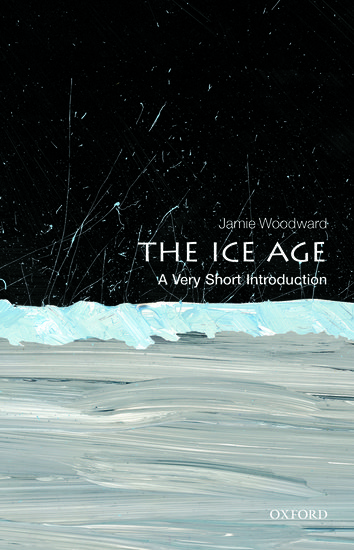Home >
A Very Short Introduction >
The Ice Age (Geography)
A Very Short Introduction | Geography
The Ice Age
ISBN: 9780199580699
Series: A Very Short Introduction
The Ice Age (Geography)
A Very Short Introduction The Ice Age (Geography) Media > Books > Non-Fiction > Education Books Expect Delays of Up to 4 Weeks| Order Below |
ISBN
9780199580699 (10-digit ISBN: 0199580693)
- Description
- Key Features
- Series Description
- Table of Contents
- Considers the development of Ice Age theory through history
- Looks at how we came to understand the changing climates and environments of the Ice Age
- Explores how data from ocean and ice-core records is being used to interpret the patterns and cycles of climate change
- Written in an easy and fluid narrative style, including stories and biographical sketches of the key people and the human stories of those involved
The study of the Quaternary ice age has revolutionized ideas about Earth system change and the pace of landscape and ecosystem dynamics. The Ice Age: A Very Short Introduction looks at evidence from the continents, the oceans, and the ice core records, and the human stories behind it all. Jamie Woodward examines the remarkable environmental shifts that took place during the Great Ice Age of the Quaternary Period. He explores the evolution of ideas, evaluates the contributions of the leading players in the great debates, and presents some of the ingenious methods that have been used to retrieve information about the recent geological past.
In an era of warming climate, the study of the ice age past is now more important than ever. This book examines the wonders of the Quaternary ice age - to show how ice age landscapes and ecosystems were repeatedly and rapidly transformed as plants, animals, and humans reorganized their worlds.
Reading Guide
Oxford's Very Short Introductions series offers concise and original introductions to a wide range of subjects--from Islam to Sociology, Politics to Classics, Literary Theory to History, and Archaeology to the Bible.
Not simply a textbook of definitions, each volume in this series provides trenchant and provocative--yet always balanced and complete--discussions of the central issues in a given discipline or field. Every Very Short Introduction gives a readable evolution of the subject in question, demonstrating how the subject has developed and how it has influenced society. Eventually, the series will encompass every major academic discipline, offering all students an accessible and abundant reference library.
Whatever the area of study that one deems important or appealing, whatever the topic that fascinates the general reader, the Very Short Introductions series has a handy and affordable guide that will likely prove indispensable.
Please note: As this series is not ELT material, these titles are not subject to discount.
Introduction
1: The Quaternary Ice Age
2: Erratic Boulders and the Diluvium
3: Monster Glaciers
4: Die Eiszeit
5: 1840
6: Ice sheets or icebergs
7: Glacials, interglacials, and celestial cycles
8: Deep ocean sediments and dating the past
9: Ice cores, abrupt climate shifts, and ecosystem change
Epilogue
Further reading
The study of the Quaternary ice age has revolutionized ideas about Earth system change and the pace of landscape and ecosystem dynamics. The Ice Age: A Very Short Introduction looks at evidence from the continents, the oceans, and the ice core records, and the human stories behind it all. Jamie Woodward examines the remarkable environmental shifts that took place during the Great Ice Age of the Quaternary Period. He explores the evolution of ideas, evaluates the contributions of the leading players in the great debates, and presents some of the ingenious methods that have been used to retrieve information about the recent geological past.
In an era of warming climate, the study of the ice age past is now more important than ever. This book examines the wonders of the Quaternary ice age - to show how ice age landscapes and ecosystems were repeatedly and rapidly transformed as plants, animals, and humans reorganized their worlds.
Reading Guide
Key Features
- Considers the development of Ice Age theory through history
- Looks at how we came to understand the changing climates and environments of the Ice Age
- Explores how data from ocean and ice-core records is being used to interpret the patterns and cycles of climate change
- Written in an easy and fluid narrative style, including stories and biographical sketches of the key people and the human stories of those involved
Series Description
Oxford's Very Short Introductions series offers concise and original introductions to a wide range of subjects--from Islam to Sociology, Politics to Classics, Literary Theory to History, and Archaeology to the Bible.
Not simply a textbook of definitions, each volume in this series provides trenchant and provocative--yet always balanced and complete--discussions of the central issues in a given discipline or field. Every Very Short Introduction gives a readable evolution of the subject in question, demonstrating how the subject has developed and how it has influenced society. Eventually, the series will encompass every major academic discipline, offering all students an accessible and abundant reference library.
Whatever the area of study that one deems important or appealing, whatever the topic that fascinates the general reader, the Very Short Introductions series has a handy and affordable guide that will likely prove indispensable.
Please note: As this series is not ELT material, these titles are not subject to discount.
EASY ORDER FORM
PRICES LISTED INCLUDE CONSUMPTION TAX
Price Before Tax:
¥1,790


